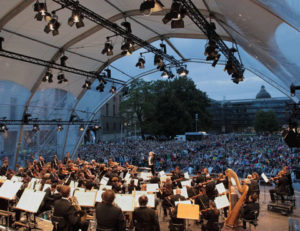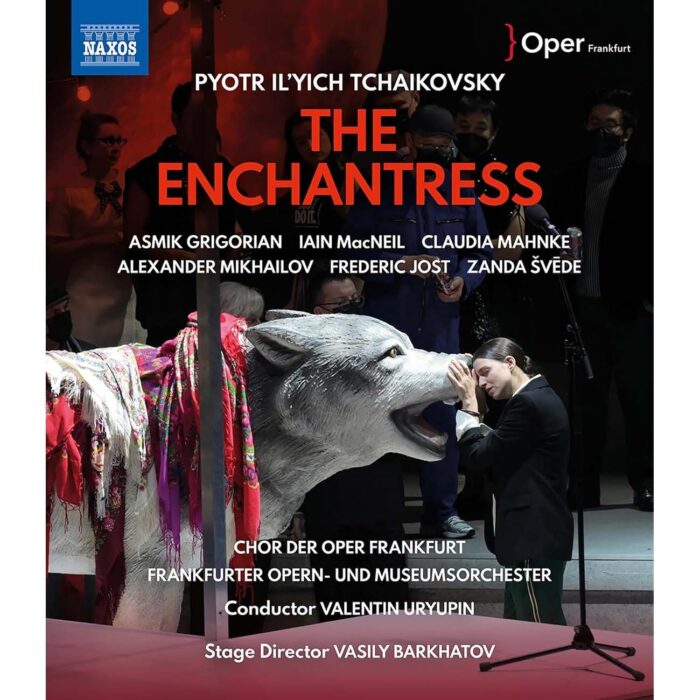
TRG Arts Releases New Study of Comeback Plans for Performing Arts Organizations
By Chris RuelTRG Arts, an international arts management consulting group, released data from its most recent study of U.S., U.K., and Canadian performing organizations’ comeback plans.
The results are surprising on several fronts, with top-level numbers showing deep differences in timing for the resumption of live in-person events, as well as subscription and individual event ticket sales, investment in new works, and safety protocols. TRG’s sample size grew from 74 clients surveyed in June 2020 to 226 this year, thus providing a broader picture of organizational strategies for returning to live performances.
It’s important to note that TRG’s study was not opera-specific and included the theater, presenter, orchestra, dance, and multi-disciplinary sectors. Opera organizations should bear this in mind when considering TRG’s readout.
Except for organizations in Canada, whose national vaccination metrics have lagged behind those of its southern neighbor and the U.K., 55 percent of arts organizations in the U.S. plan to host live performances before October 2021, and a whopping 83 percent of U.K. organizations plan a return before Sept. 1, 2021. A robust Canadian arts and culture comeback is not on the horizon until Q4, with 67 percent of organizations expecting to welcome audiences by the close of the year.
Within the U.S., regional differences abound, with 61 percent of organizations in the Southeast planning the resumption of live in-person events during Q3 of 2021. The West and Midwest were close behind, with 59 percent and 54 percent, respectively. The Northeast, however, was a full 10 percentage points behind the Southeast at 51 percent, and the South 19 percentage points behind the leading region at 40 percent.
U.S.-based opera organizations are splitting resumption of live performances evenly between Q2 and Q3, with 25 percent returning each of the two quarters before a 50 percent jump in Q4, thus completing their comebacks before 2022. Art forms other than opera are more aggressive in Q3.
The data around ticket sales, both subscription and single event, reflects the timing of organizational comebacks. Eighty percent of Canadian and 53 percent of U.S. organizations have yet to put subscription packages on sale, while 93 percent of Canadian, 13 percent of U.K., and 74 percent of U.S. arts organizations having yet to open up sales for single events.
Thirty-one percent of U.S. performing arts organizations responded that subscription/package demand is stronger or the same as pre-pandemic levels. In contrast, 20 percent of Canadian organizations said demand is weaker or the same. The largest drop in demand for single event tickets comes from the U.K., where 71 percent of organizations reported lower demand.
Though the loss of revenue due to the pandemic hit organizations hard, the TRG study revealed that 71 percent of organizations are committed to keeping ticket prices at their pre-COVID levels. The majority of organizations planning price increases expect to raise ticket cost by 10 percent or less. Seventeen percent of organizations will either lower their prices or move to a Pay What Your Wish pricing structure for 2021-22.
In terms of programming, organizations in both the U.S. and U.K. plan on keeping the same pre-COVID balance between traditional and new works, with 58 percent of U.K. organizations and 66 percent of U.S. organizations taking a more conservative approach to their repertoire. This also reflects the change in investment in new works. Thirty percent of responding organizations stated they would allocate no additional resources for new works in 2021-22.
TRG’s readout around audience safety showed masks, physically distanced seating, and hand sanitizer will be the primary means for mitigating the spread of the virus once venues reopen their doors. U.K. organizations lean far more heavily on masks, distancing, and sanitizer than do their counterparts in the U.S. or Canada. Fifty-five percent of U.S. arts organizations plan to use sanitizer, 52 percent masks, and 23 percent physically distanced seating. The corresponding U.K. numbers are 90 percent, 83 percent, and 75 percent, respectively.
And, if you’re wondering whether audiences need to show proof of vaccination at the door, only seven percent of Canadian organizations, four percent of U.K. organizations, and seven percent of U.S. organizations expect to require documentation.



